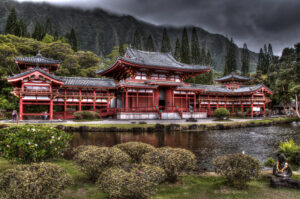
After being highly encouraged, by the folks at the Old Julian Photography Gallery, to try my hand at HDR photography, I have decided to make the switch to HDR, for my landscapes. I say that, because portraits tend to turn people into Zombies, when using the HDR technique, ha. So, you’re interested in buying HDR Software? To be honest, it wasn’t an easy one for me, because I have always like photographing a subject in its purest form, without any major touchups by Photoshop or Lightroom. I know for a lot of people HDR pictures may seem strange, but after photographing in different situations, I find it offers the best of both worlds, because you are able to get the highs and lows of pictures with the combination of five or more pictures in one picture. And of course if you have clouds or grey skies in the background look out, it looks awesome. But to be honest, it’s not all about taking the perfect picture; you have to use the correct software as well. I tried a few pieces of software till I found the one that worked for me.
Photomatrix Essentials is produced by HDRsoft and to be honest it was a great little program. One of the reasons, I tested this software, because it came highly recommended by other photographers and it was easy to use. I didn’t need to read the encyclopedia Britannica to be able to start converting images to HDR. It did lack robustness if you will, I am not sure if that is a word or not, but you get the point. And of course it comes in Mac or PC flavors, as well as 32 or 64 bit, like the majority of all packages listed here.
Luminance HDR is an open source solution and another product that I did try. I liked it because it received good reviews and on top of it was free, an extra bonus. It has some great advanced features and some amazing capabilities. Luminance is a pretty good product, but wasn’t exactly what I wanted. From reading other reviews, the natives appear to be unhappy about the lack of updates, but if you like it and use it, be sure to donate some funds, they aren’t Microsoft.
Photomatrix Pro, by HDRsoft is the third product I tried and was very pleased. It offered everything that I needed and more. It is easy to use, just drag and drop your photo’s or browse to them and you are off. After selecting a few options and presets, you are ready to go. You can also customize your image if necessary or adjust advanced settings. Photomatrix Pro is packed with presets from everything from: Natural to Creative to Grunge. I prefer simple software packages; especially after trying to master Photoshop.
Fusion, by NS-Point is another low-cost product, at only $25. One of the benefits is that it is simple to use right out of the box. Something I did notice, when using multiple shots, the software does have an issue with Ghosting. Ghosting is caused by a moving object in multiple pictures. For instance, you are at the beach during sunset and you want to shoot it in HDR. You take your five shots, only later to discover that there were seagulls flying across the sky. Now most software packages will eliminate this issue, but you may want to leave the birds.
I recommend downloading some HDR software programs and trying them. This will give you the ability to see what features you are interested in. At first it can be overwhelming, but take your time and get recommendations from other photographers and friends. Now, I know some programs are free, while others to run $100 or so. You need to decide, which works for you the best, remember they are your pictures. I would also recommend reading the features; those are going to be key for you.
I hope I have not bored you too much. I had fun writing this one. I trust I have given you some valuable tips to think about, before planning your next shoot. It’s not all bad, just be clear and informative, it will save you a lot of headaches. Remember nothing is set in stone and there is not perfect formula, so go out and have some fun.

Leave a Reply